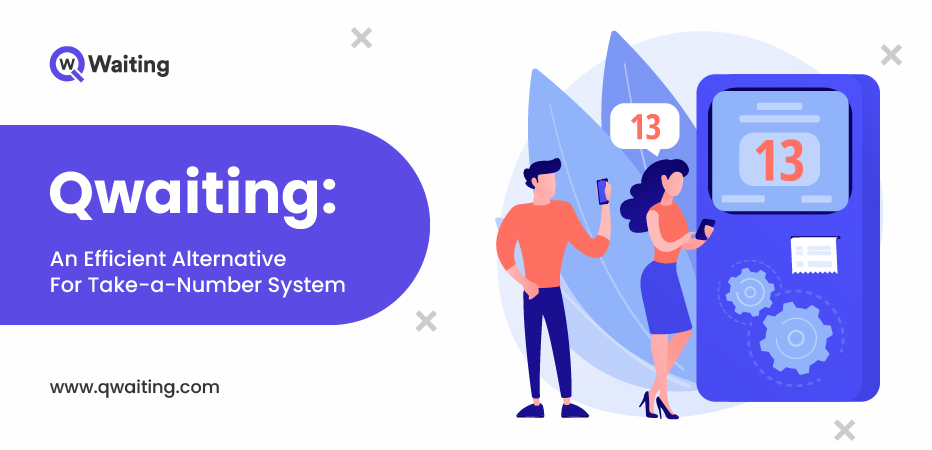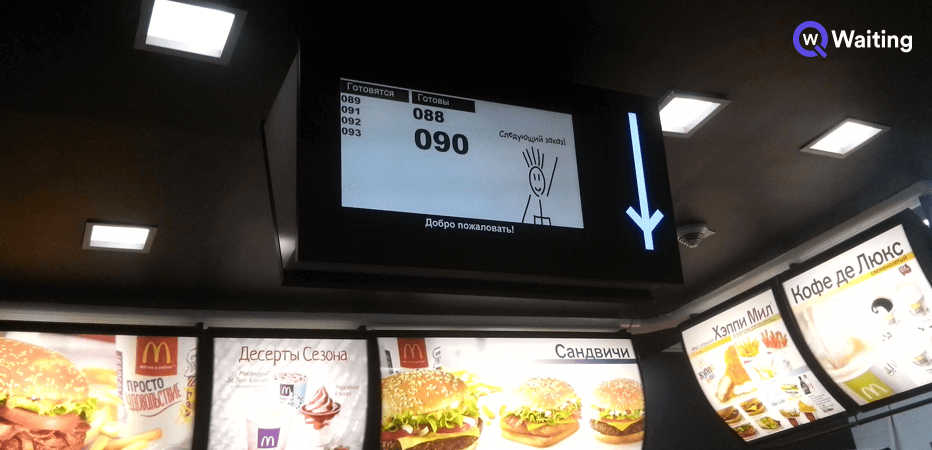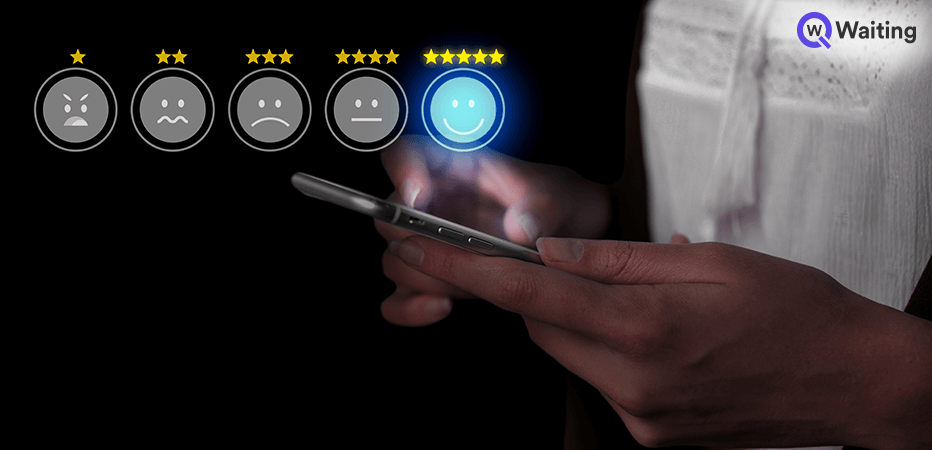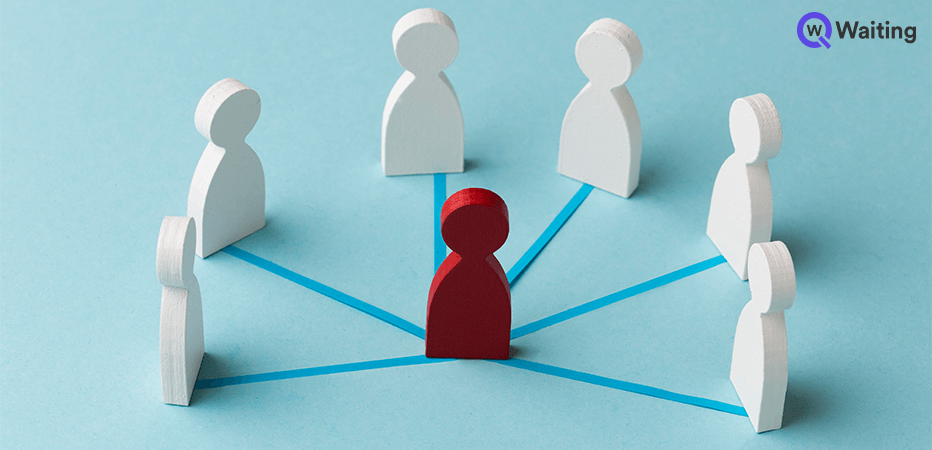
In today’s dynamic and advanced world, waiting in long queues lines can be a frustrating and time-consuming experience. Whether it’s at a government office, a healthcare facility, or a restaurant, the traditional take-a-number system often leads to customer dissatisfaction & inefficient service. But what if there existed a more smarter and effective option?
Introducing Qwaiting, the efficient and user-friendly alternative that streamlines the waiting process and eliminates the need for physical tickets. With Qwaiting, customers can join the queue from any location, track their position in real-time, and receive alert notifications when it’s their turn. This all-in-one solution minimizes waiting times & elevates the customer experience, positioning it as the ideal selection for businesses to enhance their overall services.
The queue management system has been demonstrated to be highly effective, resulting in a 20% rise in revenue & a 25% increase in customer satisfaction. Businesses can create a more positive and engaging experience for their customers by eliminating the frustration of waiting in long queues.
Say Goodbye to the take-a-number system and Hey to robust cloud-based Qwaiting!
What Is Take-a-Number System?
A take-a-number system is a method used in various sectors, such as banks, hospitals, and restaurants, to manage and organize better customer flow. Its purpose is to minimize waiting times by implementing an organized process that serves customers in order of their arrival.
In a token number system, customers receive numbered tickets upon their arrival from a kiosk, and each customer gets a unique appointment number. The number is usually displayed on a digital screen or announced through audio announcements, indicating the customer’s position in the queue line. As customers wait for their turn, they can keep track of the displayed numbers to estimate their average wait time. When a service counter becomes available, the corresponding number is displayed or called, signaling that the next customer in line can be served.
Reasons: Why Token Number System Is Lagging Behind?

In this segment, I’ll cover the grounds for falling behind in the use of the token number system. Let’s dive into it.
Insufficient Clarification
Take-a-number systems, commonly used in restaurants, hospitals, banks, and government offices, can often lead to confusion & frustration among customers. While this system aims to streamline the process, it may not provide sufficient clarification regarding the services required or the estimated waiting time.
For example, when you arrive at a hospital for treatment. You notice a crowded queue and decide to approach the kiosks to make an appointment. After making the appointment, you receive a number that is supposed to help you track your turn. Naturally, if your appointment number is 011, you would expect to be treated before number 012. However, in reality, it is not uncommon for appointments 012, 013, & even 019 to be called before yours due to emergency & other priority factors.
This situation may seem illogical at first, as you might assume that the appointment numbers are assigned strictly in sequential order. However, the reason for the variation in the appointment schedule is that some patients come for regular check-ups, while others require immediate medical attention. Emergency cases often take precedence over regular appointments, causing the numbering system to deviate from a strictly sequential order. Unfortunately, this deviation is not effectively communicated to the patients, leading to raised hopes followed by disappointment when their turn is delayed.
Chances of Biases
When customers arrive at the premises, they take a unique number ticket to avail themselves of the services. However, there may be chances of biases and partiality among the staff member for serving their friend or family member first instead of other customers. This practice leads to longer waiting times for other customers and ultimately results in poor customer satisfaction.
Lack Of Personalization
Take-a-number systems are generally designed to provide a standardized and efficient customer service experience. However, they often lack personalization. The system treats all customers equally by providing a unique ticket number instead of remembering their customers’ names or considering their individual preferences. This impersonal approach may not meet the expectations of customers. Some customers prefer tailored service and demand a great level of comfort and ease by being called by their name.
Cost And Resource Implications
Implementing and maintaining a take-a-number system can involve significant costs and resource implications. This includes installing & maintaining the necessary infrastructure, such as ticket dispensers & display boards, as well as training staff to operate the system effectively. Additionally, it may necessitate staffing resources to manage the queues and address any issues that arise. These costs can be a disadvantage for smaller businesses with limited budgets. Moreover, the system relies on printing materials to produce the tickets, which can lead to additional expenses.
Security Concerns
Take-a-number systems involve the distribution of physical tickets or tokens to customers, which can give rise to security concerns. One significant risk is the potential loss or theft of tickets, which could allow unauthorized individuals to manipulate the system. By obtaining or forging tickets, these individuals may disrupt the fairness and efficiency of the queue management process.
Furthermore, security concerns become particularly important in industries where sensitive information is exchanged or where customer authentication is necessary. For instance, in hospitals, ensuring patient confidentiality and privacy is crucial, and a generic take-a-number system might not offer the required safeguards. These security concerns can hinder the adoption of such systems in specific industries.
Why You Should Integrate Cloud-based Qwaiting Into Your Premises?
The following are the main reasons to deploy the queue management system i.e. Qwaiting. Let’s understand it in detail.
Streamlined Customer Experience

Cloud-based Qwaiting software improves the overall customer experience. They can easily join a virtual queue, receive real-time updates on their waiting time, & even have the flexibility to make appointments like a pro from their mobile. Ultimately, this eliminates the need for physical waiting lines, reduces customer frustration, and higher satisfaction.
Improved Operational Efficiency
The software allows you to optimize your resources and improve operational efficiency. You can analyze queue data, track service times, and identify inefficiencies in your workflow. This helps you to optimize resource allocation, reduce customer waiting times, and deliver faster service to them.
Staff Productivity

With cloud-based Qwaiting software, your staff can focus on delivering quality service to your customers instead of managing physical long queues. They can access real-time data about waiting times, service requests, and other relevant information, which helps them to serve customers more efficiently. This improves staff productivity and allows them to handle more tasks, leading to better customer satisfaction.
Data-driven Insights
Qwaiting software provides you with valuable data and analytics that can help you to make an informed business decision. You can analyze customer flow patterns, peak hours, and service times to optimize staffing levels. Additionally, the customer feedback system helps you to gather feedback and customer ratings to identify areas for improvement & enhance your overall service quality.
Third-party Integration

Qwaiting software offer integration capabilities with other systems such as customer relationship management (CRM), appointment scheduling, or point-of-sale (POS) systems. This integration streamlines your operations further by synchronizing customer data and enabling a seamless flow of information between different systems. Eventually, it helps to make your processes efficient and improve your overall bottom line.
Cost-effectiveness

Implementing a queue management system reduces the need for physical infrastructure, such as additional waiting areas or more service counters. By optimizing the customer flow and managing queues efficiently, businesses can make better utilization of their current facilities and avoid costly expansions.
Concluding Remarks
The Qwaiting system has emerged as an efficient alternative to the conventional take-a-number system. With its advanced features and streamlined functionality, it offers several benefits to both businesses and customers. The system provides an enhanced customer experience by minimizing wait times, improving operational efficiency, and optimizing resource allocation. As digital transformation continues to reshape various industries, adopting solutions like Qwaiting can provide a competitive edge & contribute to a smooth & seamless customer experience.
